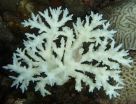(Press-News.org) Theoretical physicist Moumita Maiti and colleagues at the Jawaharlal Nehru Centre for Advanced Scientific Research in Bangalore, India, have now implemented an algorithm for analysing void space in sphere packing, where the spheres need not all be the same size. This method, about to be published in EPJ E, could be applied to analyse the geometry of liquids present between multi-sized spheres that are akin to a model for porous material. This provides a tool for studying the flow of such fluids through porous material. More importantly, it can also be used to study the packing geometry of proteins.
There have been several previous attempts to calculate the volume and the surface area of packing of spheres. But few methods have taken into account the connectivity of empty space between spheres, which matters, for example, when detecting buried cavities in proteins.
To remedy this issue, the authors have relied on a programme capable of performing a very detailed study of the size distribution of the free volumes of individual spheres—that is, the volume swept by the centre of the sphere without overlapping with any of the other spheres—in jammed sphere packing. It also makes it possible to calculate the exact volumes and surface areas of cavities by detecting the disconnected components of cavities.
The team applied this method to the analysis of protein structures. This led them to compute various key quantities such as the distribution of sizes of buried cavities and pockets between spheres, the matching of areas accessible to solvent in which protein are found with the corresponding volumes and the composition of residues lining cavities.
Ultimately, the authors are planning to prepare this algorithm for distribution as open source software.
### Reference:
M. Maiti, A. Laxminarayanan and S. Sastry (2013), Characterization of Void Space in Polydisperse Sphere Packings: Applications to hard sphere packings and to protein structure analysis, European Physical Journal E, DOI 10.1140/epje/i2013-13005-4
For more information, please visit www.epj.org
The full-text article is available to journalists on request.
Gap geometry grasped
A new algorithm could help understand the structure of liquids, and how they flow through porous media
2013-02-01
ELSE PRESS RELEASES FROM THIS DATE:
How do corals survive in the hottest reefs on the planet?
2013-02-01
Coral reefs are predicted to decline under the pressure of global warming. However, a number of coral species can survive at seawater temperatures even higher than predicted for the tropics during the next century. How they survive, while most species cannot, is being investigated by researchers at the National Oceanography Centre, Southampton (NOCS) and New York University Abu Dhabi (NYUAD).
We tend to associate coral reefs with tropical seas of around 28 degrees, where even slight warming can have devastating effects on corals. But in the Arabian/Persian Gulf, corals ...
European investments in advanced computing systems deliver results
2013-02-01
January 31, 2013 - At the HiPEAC 2013 conference in Berlin, KALRAY demonstrated MPPA256, the world's first supercomputer-on-a-chip, consisting of 256 computing cores. This innovative processor combines the ultimate in several processor types and will enable a whole new class of embedded and industrial applications in the fields of image processing, signal processing, control, communications and data security. The MPPA256 is completely designed in Europe and is only one of the success stories resulting from the 170 million Euro investment in carefully selected European funded ...
Routes towards defect-free graphene
2013-02-01
A new way of growing graphene without the defects that weaken it and prevent electrons from flowing freely within it could open the way to large-scale manufacturing of graphene-based devices with applications in fields such as electronics, energy, and healthcare.
A team led by Oxford University scientists has overcome a key problem of growing graphene – a one atom-thick layer of carbon – when using an established technique called chemical vapour deposition, that the tiny flakes of graphene form with random orientations, leaving defects or 'seams' between flakes that ...
Study: Infection preventionists know safe care
2013-02-01
Washington, DC, February 1, 2013 – There is general agreement among hospital infection preventionists (IPs) with respect to which practices have weak or strong evidence supporting their use to prevent healthcare-associated infection, according to a new study published in the February issue of the American Journal of Infection Control, the official publication of the Association for Professionals in Infection Control and Epidemiology (APIC).
Furthermore, IPs with certification in infection prevention and control (CIC®) are two to three times more likely to perceive the ...
New study sheds light on link between dairy intake and bone health
2013-02-01
Boston - A study by researchers at the Institute for Aging Research (IFAR) at Hebrew SeniorLife, an affiliate of Harvard Medical School (HMS), has found that dairy intake —specifically milk and yogurt —is associated with higher bone mineral density (BMD) in the hip, but not the spine. Cream, on the other hand, may be associated with lower BMD overall. Published today in the journal Archives of Osteoporosis, these findings suggest that not all dairy products are equally beneficial in promoting bone strength.
"Dairy foods provide several important nutrients that are beneficial ...
If you are impulsive, take modafinil and count to 10
2013-02-01
Philadelphia, PA, February 1, 2013 – Poor impulse control contributes to one's inability to control the consumption of rewarding substances, like food, alcohol, and other drugs. This can lead to the development of addiction. FDA-approved medications for alcoholism, like naltrexone (Revia) and disulfiram (Antabuse), are thought to reduce alcohol consumption by curbing cravings and creating unpleasant reactions to alcohol, effects which reduce the desire to drink alcohol.
New medications, however, might target the uncontrollable urges to consume drugs of abuse. The idea ...
Programming cells: The importance of the envelope
2013-02-01
In a project that began with the retinal cells of nocturnal animals and has led to fundamental insights into the organization of genomic DNA, researchers from Ludwig-Maximilians-Universitaet (LMU) in Munich show how the nuclear envelope affects nuclear architecture - and gene regulation.
The double-stranded DNA molecules that make up the genetic material are wrapped around protein complexes to form compacted "chromatin". The active portion of the genome is less densely packed, and thus more easily accessible, than the inactive fraction, and is referred to as euchromatin. ...
Can plants be altruistic? You bet, says new CU-Boulder-led study
2013-02-01
We've all heard examples of animal altruism: Dogs caring for orphaned kittens, chimps sharing food or dolphins nudging injured mates to the surface. Now, a study led by the University of Colorado Boulder suggests some plants are altruistic too.
The researchers looked at corn, in which each fertilized seed contained two "siblings" -- an embryo and a corresponding bit of tissue known as endosperm that feeds the embryo as the seed grows, said CU-Boulder Professor Pamela Diggle. They compared the growth and behavior of the embryos and endosperm in seeds sharing the same mother ...
Disparities exist in kidney transplant timing
2013-02-01
Highlights
African Americans and individuals without private health insurance are less likely to receive a kidney transplant before needing dialysis.
Geographic region is not a major factor in determining whether a patient receives a kidney transplant before starting dialysis.
Nearly 90,000 people in the U.S. are waiting for a kidney transplant, and many will die before a suitable organ becomes available.
Washington, DC (January 31, 2013) — African-Americans and individuals without private health insurance are less likely than others to receive a kidney transplant ...
People having stroke should get therapy within 60 minutes of hospital arrival
2013-02-01
People having an ischemic stroke should receive clot-dissolving therapy – if appropriate -- within 60 minutes of arriving at the hospital, according to new American Stroke Association guidelines published in the American Heart Association journal Stroke.
Ischemic stroke, which accounts for nine in 10 strokes, is caused by a blood clot in the arteries leading to the brain. Calling 9-1-1 immediately after recognizing any of the warning signs of stroke -- and getting to a stroke center as fast as possible -- are still the most important steps for optimal stroke care.
During ...
LAST 30 PRESS RELEASES:
Researchers find promising new way to boost the immune response to cancer
Coffee as a staining agent substitute in electron microscopy
Revealing the diversity of olfactory receptors in hagfish and its implications for early vertebrate evolution
Development of an ultrasonic sensor capable of cuffless, non-invasive blood pressure measurement
Longer treatment with medications for opioid use disorder is associated with greater probability of survival
Strategy over morality can help conservation campaigns reduce ivory demand, research shows
Rising temperatures reshape microbial carbon cycling during animal carcass decomposition in water
Achieving ultra-low-power explosive jumps via locust bio-hybrid muscle actuators
Plant-derived phenolic acids revive the power of tetracycline against drug-resistant bacteria
Cooperation: A costly affair in bacterial social behaviour?
Viruses in wastewater: Silent drivers of pollution removal and antibiotic resistance
Sub-iethal water disinfection may accelerate the spread of antibiotic resistance
Three in four new Australian moms struggle with body image
Post-stroke injection protects the brain in preclinical study
Cardiovascular risk score predicts multiple eye diseases
Health: estimated one in ten British adults used or interested in GLP-1 medications for weight loss
Exercise to treat depression yields similar results to therapy
Whooping cough vaccination for pregnant women strengthens babies’ immune system
Dramatic decline in new cases of orphanhood in Uganda driven by HIV treatment and prevention programs
Stopping weight loss drugs linked to weight regain and reversal of heart health markers
Higher intake of food preservatives linked to increased cancer risk
Mass General Brigham–developed cholera vaccine completes phase 1 trial
First experimental validation of a “150-year-old chemical common sense” direct visualization of the molecular structural changes in the ultrafast anthracene [4+4] photocycloaddition reaction
Lack of support for people on weight loss drugs leaves them vulnerable to nutritional deficiencies, say experts
Dogs’ dinners can have greater climate impact than owners’
Are you ready to swap salmon for sprats and sardines?
1.6 million UK adults used weight loss drugs in past year
American College of Cardiology comments on new dietary guidelines for Americans
American Society of Gene & Cell Therapy and Orphan Therapeutics Accelerator partner to advance and commercialize promising rare disease treatments
One in 14 patients having day case surgery have new or worse chronic pain 3 months after their operation
[Press-News.org] Gap geometry graspedA new algorithm could help understand the structure of liquids, and how they flow through porous media

